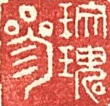One of the great strengths of Chinese medicine is the ability to utilize multiple systems of diagnostics and treatments seamlessly in any given patient. Today is a small example:
90 year old female patient:
pulse examination utilized 3 different pulse methods:
1. Dong Han Korean: reveals Knotted pulse in Right distal position. (Here Knotted is akin to the Spinning Bean)
2. CCPD: Right Special Lung position shows a mildly Restricted pulse in the distal aspect of the position
3. Directional Pulse: reveals a Floating pulse in the San Jiao position suggesting a significant loss of latency.
I questioned patient about chest and breast symptoms which she then reported as tightness around chest and breasts. The concern, of course, here is with an obstruction in the chest, most likely due to a tumor with loss of latency (possible metastasis). These findings need to be confirmed on subsequent treatments.
What is interesting is how each pulse method confirmed and added information to the other to provide a clearer picture of the pathology.
The patient was treated with a San Jiao Divergent meridian treatment, SJ 16, Ren 12 with a Deep-Superficial-Deep needling technique, as well as ST 12 and LI 4. The Knotted pulse decreased by 50% as a result of this one treatment.
acupuncture in new jersey
Subscribe to:
Post Comments (Atom)





3 comments:
This post comes at a great time for me. I have often felt stymied by the different systems I have learned, not knowing how to integrate them. The more I sit with it, though, the more I realize that I don't have to do anything - the integration is done for me by the fact that all of the systems are speaking to the same truth. They all reveal a layer of what is happening. Your simple example above illustrates this beautifully. Thank you!
Eric
Thanks, Eric. The great thing about being rooted in a lineage, especially one that is transmitted in person, orally and clinically, is that one can perceive other traditions and relate it back to what one knows, or to help the lineage grow. I would argue that this is in fact why lineages are orally based often, to prevent the dogmatism that results from text book learning. With oral teachings, one is free to perceive, interpret, discover, expand in a way that is unique to the individual and yet still remains true to the core of the teachings. This is how I understand the use of different methods clinically; it's part of my growth as a clinician, and part of my commitment and contribution to the medicine. I know you're doing the same, and I look forward to hearing more about it.
Ross,
I can't agree strongly enough with your insights above (and also in other recent posts). I had a major epiphany today about what it means to be transmitting one's lineage and yet to have the freedom to engage with other systems while continuing to grow. You're right! this is how lineages grow and evolve, and I am so appreciative of your friendship and support as we strive to stay true to the lineage we share, while immersing ourselves in receiving other Classical transmissions. In a sense I am reminded of Wang Fengyi, and how a huge part of one's becoming free is acknowledging his ancestors; and how I am glad for the writings of our deep, Classical forebears (named and anonymous), and for our lineage through Hammer and Shen, and yet,also, to the 20th Century work of Reich, Jung, Lowen, Perls, Sullivan, Fromm, and Fromm-Reichmann.
Post a Comment